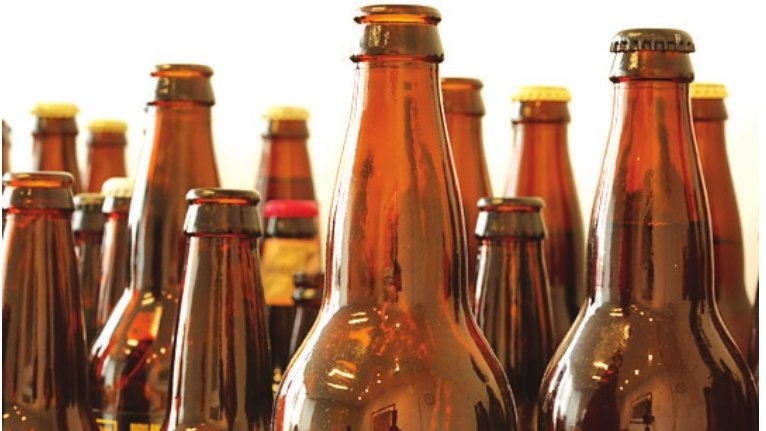
To modern-day beer lovers, carbonation is expected, but do you know how beer becomes bubbly? Today, many beers are carbonated through a process called “forced carbonation,” where carbon dioxide (CO2) is pumped into the beverage, pressurizing the bottle or can. Upon opening the container, the drink is carbonated because of depressurization. But as craft beer becomes more prominent in the regional and national market, “bottle-conditioned” beers, which are carbonated naturally, are being made and found with more frequency. Aaron Hanson, owner and president of operations at Ellison Brewery, is bringing this national beer trend to greater Lansing.
“Forced carbonation is easy and quick and very controllable because you can use special test equipment to check the volumes of CO2 in the liquid,” said Hanson.
To understand what bottle-conditioning is, it’s important to know — at least the crash-course version — of how fermentation works. Essentially, yeast eats sugars, and excretes alcohol and CO2. This, more or less, is how beer becomes alcoholic, and the CO2 creates the fizzyness.
During the first, and sometimes only, fermentation process, the CO2 bubbles, but then leaves the beer, and only the alcohol is left. Bottle-conditioned beers are then re-fermented by adding more sugars and yeast to create the fizz after the first fermentation. The term “condition” in this sense, is referring directly to the content of CO2 within the beer. In Hanson’s work, he has this idea down to a science.
“You actually calculate out some additional sugar and yeast to add to the warm beer in the tank, them immediately bottle that liquid, cap/cork it and then let it sit on a shelf for three to six weeks,” he explained.
“When you do this, the yeast will eat the sugar you added, thus producing CO2 in the bottle and naturally carbonating the beer.”
With the re-fermentation process, brewers can get a small amount of what Hanson calls “mouthfeel,” referring to the texture and feel of the beer when drinking it. During the second fermentation, taste can also be affected, especially when applied to sour beers.
“Bottle-conditioning is usually only done for sour/euro type beers,” said Hanson. During forced carbonation, according to Hanson, sour beers can pick up on some “off-flavors” due to the type of yeasts that are used in sour beers.
“Sours do need bottle conditioning because if you force carbonate them you get a carbonic acid reaction in the beer that will not taste very good.”
During the second fermentation process, the yeast eats the sugars to create the CO2, but once it is done fermenting, it can create sediment, which will settle at the bottom of the bottle.
“Most bottle-conditioned beers will have some sediment in the bottom which is why people usually let them sit for a bit before opening and drinking while trying not to disturb the sediment in the bottle,” said Hanson, noting that this is either something people love or hate, depending on individual taste and texture preference.
Hanson and his team at Ellison are currently in the process of developing some bottle-conditioned beers that will be on their menu soon, many of which are in the European, or sour varieties, such as Brett Lambic, Dry-Hopped Sours, Flander’s Red with Fruit, Berliner Weisse, as well as a few other varieties.
“We have roughly 80 wine/bourbon barrels filled with 6-8 different sour beer recipes and have roughly 1200-1500 gallons in primary fermentation at the moment that will then go into barrels for secondary fermentation,” said Hanson, adding that this will eventually produce approximately 2-3,000 bottles for their initial release.
While Ellison doesn’t currently have any bottle-conditioned beers on the market at this time, their first ones will be released in the coming weeks.
Support City Pulse - Donate Today!
Comments
No comments on this item Please log in to comment by clicking here